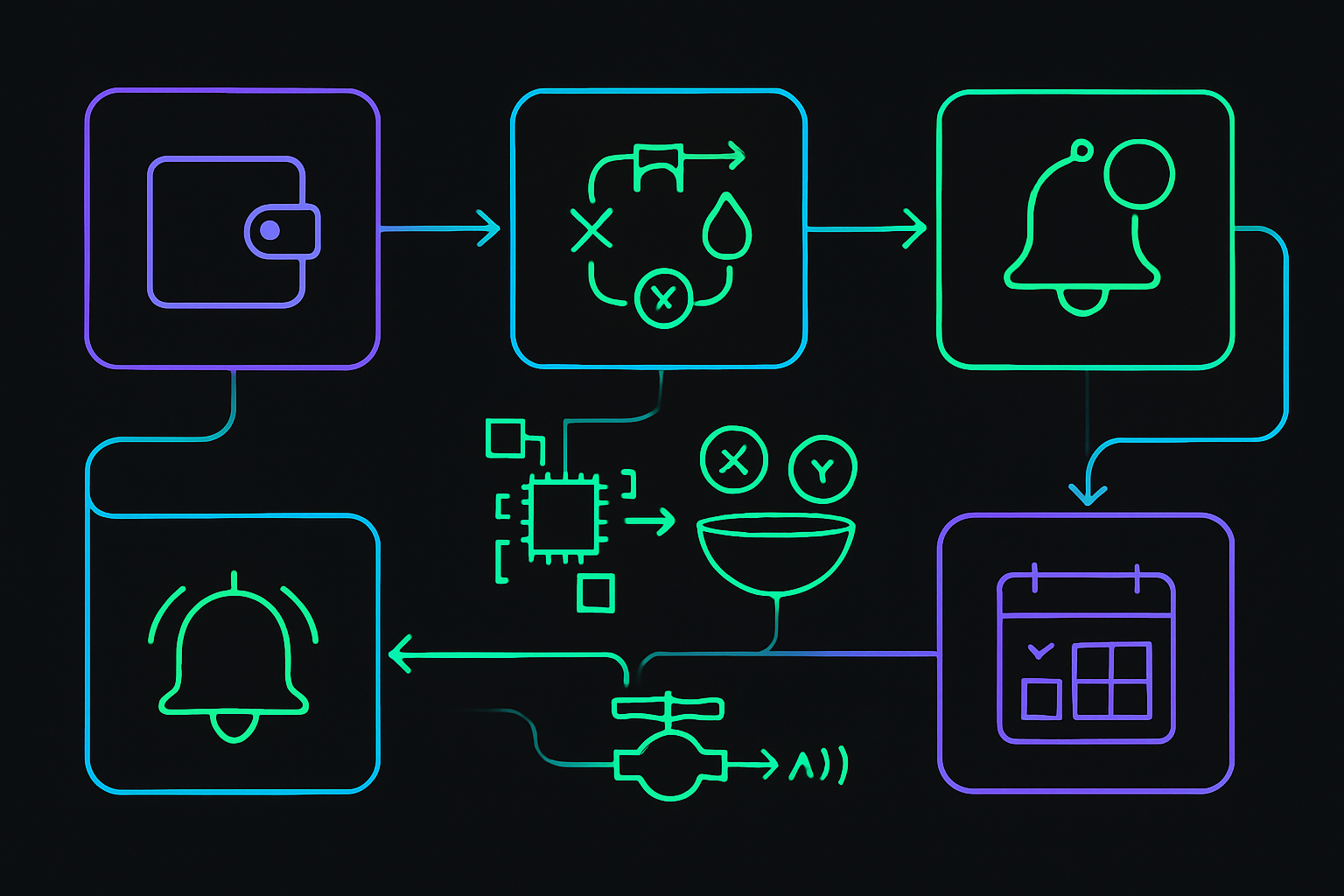
With the Base Protocol ($BASE) token currently trading at $0.290837 as of October 30,2025, interest in the upcoming $BASE token airdrop is surging among crypto enthusiasts and DeFi strategists alike. The opportunity to maximize your eligibility for this anticipated airdrop isn’t just about luck – it’s about methodical, onchain participation and ecosystem engagement. Let’s break down the exact steps you need to take to position yourself at the front of the line when Base rewards its most active users.
Actively Bridge and Transact on Base Mainnet
The first and arguably most critical step is to bridge assets to the Base Mainnet. This signals genuine commitment to the network. Use official tools like the Base Bridge to move ETH or other supported tokens from Ethereum mainnet onto Base. Once bridged, don’t let your assets sit idle – initiate transactions, swaps, or transfers between addresses on Base Mainnet.
- Why it matters: Onchain activity is a primary metric for airdrop allocation. Frequent, organic transactions demonstrate you’re not just passively farming but actively using the chain.
- Pro tip: Spread your activity over time instead of clustering all actions in one day. Consistency may be weighted more heavily by airdrop algorithms.
If you’re looking for step-by-step instructions on bridging and initial transactions, see our dedicated guide: How to Maximize Your Base Token Airdrop Eligibility.
Engage with Core Base Ecosystem DApps and Protocols
The next layer of eligibility comes from engaging with key decentralized applications (dApps) building on Base. This includes swapping tokens on decentralized exchanges (DEXes), providing liquidity, minting NFTs, and experimenting with lending or borrowing protocols native to the network.
- Diversify your activity: Don’t just stick with one dApp or protocol. Interact with multiple platforms such as Aerodrome (DEX), Zora (NFTs), and lending markets that have integrated with Base.
- Provide value: Actions like adding liquidity or participating in governance show deeper ecosystem involvement than simple swaps.
- Avoid Sybil behavior: Use your main wallet rather than dozens of new addresses; quality trumps quantity in most airdrop scoring models.
This multi-pronged approach not only increases your exposure but also aligns with historical trends seen in major L2 airdrops where ecosystem engagement was crucial for larger allocations. For more strategies on maximizing dApp interactions, check out our expanded playbook: Essential Onchain Tasks and Strategies.
Base (BASE) Token Price Prediction 2026–2031
Forecasted $BASE Price Scenarios Post-Airdrop, Reflecting Market Trends and Ecosystem Growth
| Year | Minimum Price | Average Price | Maximum Price | Potential YoY Change (%) | Market Scenario |
|---|---|---|---|---|---|
| 2026 | $0.22 | $0.35 | $0.60 | -24% to +107% | Post-airdrop volatility, price discovery, initial sell-offs |
| 2027 | $0.19 | $0.41 | $0.85 | -14% to +42% | Consolidation, early ecosystem growth, broader L2 adoption |
| 2028 | $0.26 | $0.55 | $1.10 | +34% to +34% | Improved utility, regulatory clarity, DeFi/NFT expansion |
| 2029 | $0.39 | $0.76 | $1.45 | +38% to +32% | Mainstream L2 usage, strong partnership growth |
| 2030 | $0.58 | $1.05 | $1.95 | +38% to +34% | L2 maturity, Base as a major ecosystem hub |
| 2031 | $0.82 | $1.40 | $2.65 | +33% to +36% | Base achieves critical mass, global adoption |
Price Prediction Summary
The $BASE token is expected to experience initial volatility post-airdrop in 2026 as the market discovers a fair value. Over the following years, as the Base ecosystem grows and Layer 2 adoption accelerates, prices are forecasted to rise steadily. By 2031, BASE could see significant appreciation if the network becomes a leading L2 solution, with minimum, average, and maximum prices projected at $0.82, $1.40, and $2.65 respectively. Risks remain from competition, regulatory shifts, and overall crypto market cycles.
Key Factors Affecting Base Price
- Post-airdrop selling pressure and price discovery dynamics
- Wider adoption of Layer 2 technology and Base ecosystem growth
- Regulatory clarity and integration with Coinbase and Ethereum
- Development of Base-native dApps, DeFi, and NFT platforms
- Network scalability improvements and security enhancements
- Macro crypto market cycles and sentiment
- Competition from other L2 solutions (e.g., Arbitrum, Optimism)
- Potential for Base to become a major platform for mainstream crypto adoption
Disclaimer: Cryptocurrency price predictions are speculative and based on current market analysis.
Actual prices may vary significantly due to market volatility, regulatory changes, and other factors.
Always do your own research before making investment decisions.
Earn and Maintain Base Guild Roles and Onchain Scores
If you want to stand out from passive participants, focus on acquiring recognized roles within the community such as “Based” or “Onchain” via the official Base Guild. These roles are typically awarded for completing specific tasks – think regular dApp usage, event participation, or even creative contributions like educational threads or tutorials.
- Track your progress: Tools like OnchainScore. xyz help you monitor wallet activity metrics that may influence your eligibility score.
- Sustain engagement: Don’t let your role lapse; continuous participation can be more valuable than short bursts of activity around snapshot periods.
- Aim for higher tiers: Advanced roles may unlock additional rewards if tiered distribution is implemented (as seen in previous major L2 launches).
Your guild status reflects both technical engagement and social proof within the ecosystem – two factors that often correlate strongly with maximum airdrop allocations.
Participate in Social, Governance, and Builder Activities
Beyond onchain transactions and dApp usage, Base’s airdrop criteria are expected to reward users who actively participate in the network’s social and governance fabric. This means engaging in official community events, contributing to protocol discussions, and even building or testing tools that benefit the ecosystem.
- Join community calls: Attend Base-hosted AMAs, Twitter Spaces, or Discord events. These are often tracked for engagement metrics.
- Vote or delegate: If governance proposals go live, cast your vote or delegate to trusted representatives. Active governance is a strong signal of long-term commitment.
- Contribute as a builder: Developers can earn “Builder” scores by deploying contracts, submitting pull requests to open-source Base projects, or participating in hackathons.
The more visible and constructive your participation across these vectors, the more likely you are to be recognized as a valuable member of the Base ecosystem. For a deeper dive into qualifying activities and builder opportunities, consult our full eligibility breakdown: Step-by-Step Guide to Base Token Eligibility and Rewards.

Checklist: Are You Maximizing Your $BASE Airdrop Eligibility?
With so many moving parts in the race for $BASE tokens, currently valued at $0.290837: it’s easy to overlook key steps. Use this checklist as your ongoing reference to keep your eligibility on track:
Your Next Strategic Moves
The most successful airdrop hunters combine consistency with strategic breadth. Instead of simply farming transactions or chasing short-term incentives, focus on authentic engagement across all four pillars:
- Actively Bridge and Transact on Base Mainnet
- Engage with Core Base Ecosystem DApps and Protocols
- Earn and Maintain Base Guild Roles and Onchain Scores
- Participate in Social, Governance, and Builder Activities
This approach not only optimizes your potential allocation but also positions you as an early contributor with deep roots in the growing Base community. Remember that snapshot dates may not be announced in advance, maintain regular activity rather than waiting for last-minute pushes.
Your actions today define your eligibility tomorrow. The more you build your onchain presence now, at every layer, the better prepared you’ll be when the $BASE token distribution finally arrives.
If you’re looking for further tactical insights or want to compare strategies with fellow participants, explore our comprehensive guides here:




